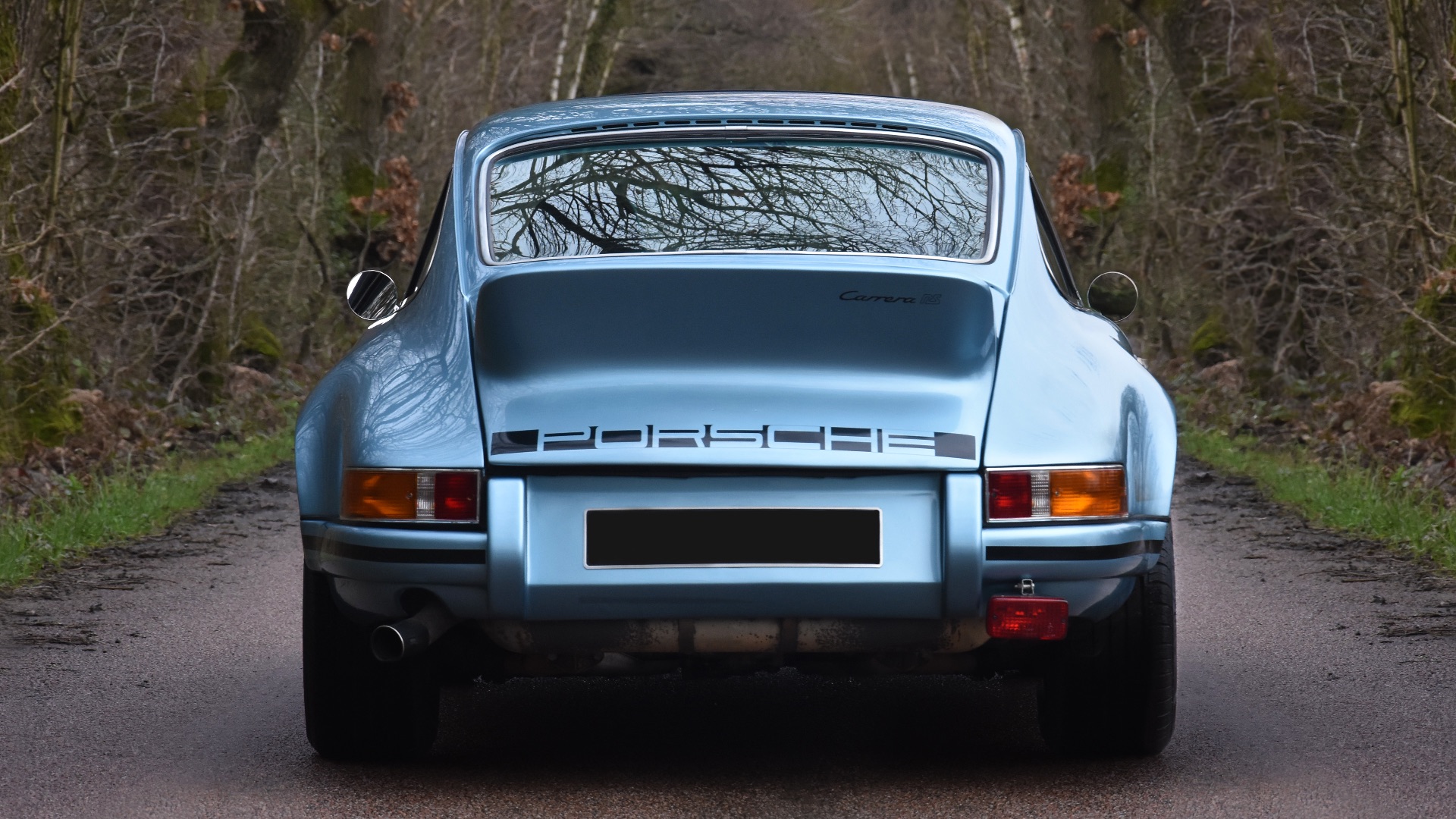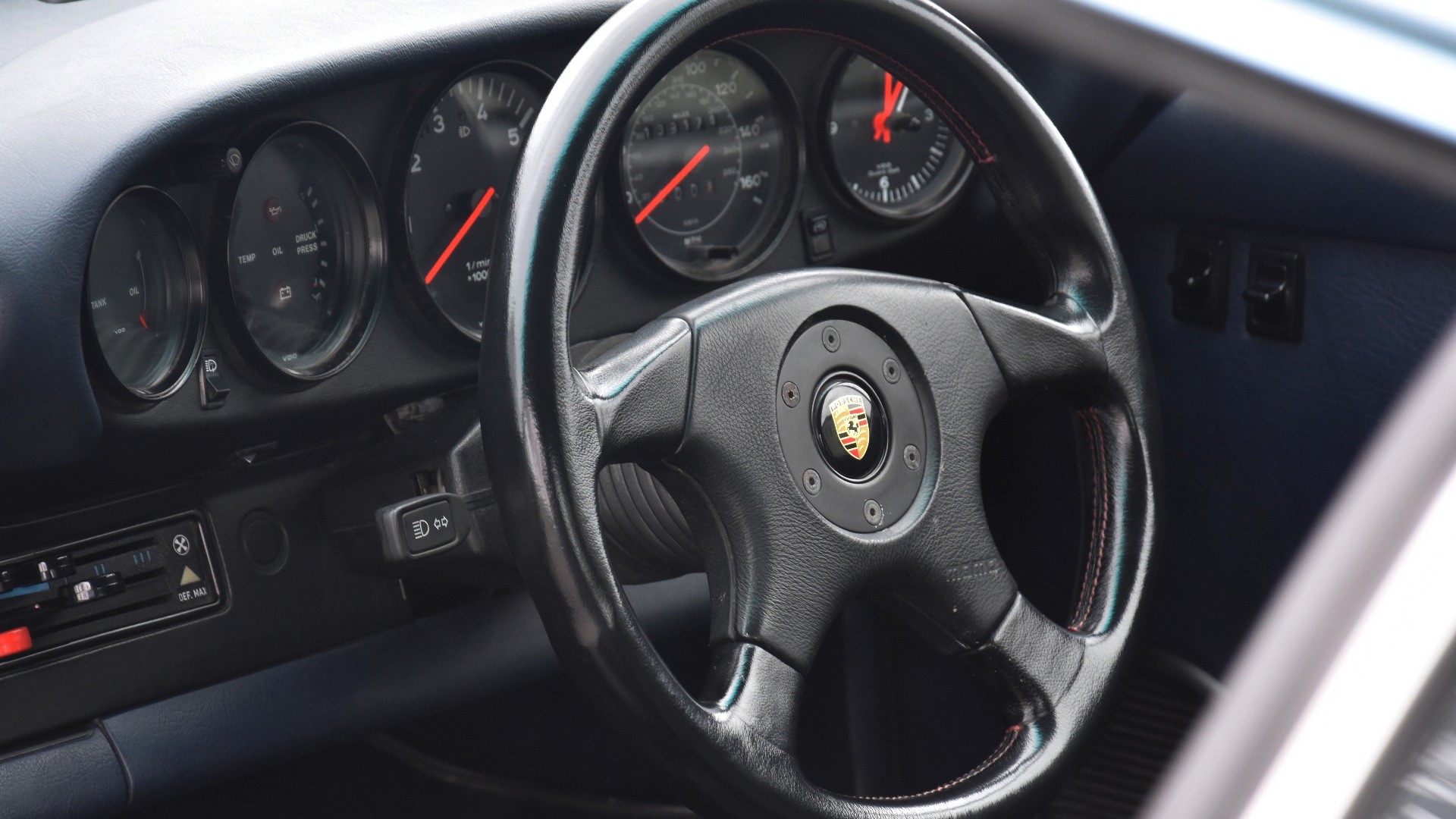The car in front of me looks a million dollars, literally. At today’s exchange rate, that equates to £777,130: about what you’d pay for a perfect 911 Carrera 2.7 RS. Yet although it resembles the most iconic Porsche of all, this is actually a 911 SC. At £45,000, it’s six percent of the price for 90 percent of the fun.
Porsche’s 911 has been the sports car to beat for more than six decades. Purists, though, may tell you it peaked in 1973. After the Le Mans-winning 917 was outlawed, Porsche needed a sequel. That car was the Carrera 2.7 RS: a homologation special designed to meet Group Four race and rally rules.
The first road-going 911 to wear the RS (Rennsport) badge, it’s the godfather of today’s revered GT3 and GT2 models.
When less is more

The RS was based on the 2.4-litre 911S, its air-cooled engine bored out to 2,681cc. It also underwent a crash diet, including thinner body panels, lighter glass and no rear seats. In Sport versions, even the Porsche crest on the bonnet was a sticker to save a few grams.
The raw figures were 213hp at 6,300rpm, 0-62mph in 5.8 seconds and 975kg in Sport spec. A more luxurious (and 100kg heavier) Touring version followed, taking total production to 1,525 cars – all built in 1973.
I was lucky enough to drive a 2.7 RS several years ago: bucket-list stuff for any petrolhead. I vividly remember how every input felt richly mechanical and the car fizzed with kinetic energy. Only its near-seven-figure value tempered my enthusiasm.
RS prices have rocketed tenfold percent over the past two decades, making it one of the fastest appreciating cars of this century. That’s great news if you own one, but less so if you aspire to.
Rennsport revival

‘Backdated’ cars have filled the vacuum. Typically, these are SC, Carrera 3.2 or 964 models produced between the late 1970s and early 1990s. Their bulky bumpers are binned, black trim is swapped for chrome and the signature RS flourishes are applied: colour-coded Fuchs wheels, a ‘Carrera’ sill script and a ducktail rear spoiler. Porsche nerds may tut in disapproval, but the result is a 911 that oozes retro cool.
This 1980 SC was backdated in 2013, using fibreglass bumpers and body panels. Its 207hp 3.0-litre engine and ‘cookie cutter’ alloys are unaltered, while its cabin boasts several niceties missing from the RS – including electric windows and a radio.
However, settle into the ‘tombstone’ seat and you couldn’t be anywhere but an air-cooled 911. The upright windscreen, offset pedals and baffling heater controls are traits that transcend any hierarchy of performance or price.
Early 911s are defiantly unconventional to drive, too. You steer with your fingertips and coax the spindly gearlever gently across the gate. You’re acutely conscious of weight transfer, sensing the back end squat under acceleration and pendulum effect of the rear-mounted engine as you turn.
You relish the car’s modest footprint and make allowances for its modest brakes. And you drink in the flat-six soundtrack, which swells from busy bluster to piercing yowl.
The sincerest form of flattery

The SC is brimful of feedback and classic character: a car that rewards on every kind of road. It’s also arguably more fun than the RS it imitates in the real world.
Granted, it doesn’t feel so textured or up-on-its-toes as the Rennsport – very few cars do, frankly – but you can drive it without fear of obliterating your investment portfolio. For many, the fact it looks the part only heightens the feelgood factor. So, don’t wait for that lottery-win 2.7 RS: just buy a 911, backdated or otherwise, then get out and drive it.
This car was kindly loaned by DM Historics in Kent and has now been sold.
ALSO READ:
The story of the classic Porsche 911



[…] bloodline of the GT3 RS dates back to the epochal Carrera 2.7 RS of 1973, adding a healthy infusion of Porsche’s RSR race cars. With outrageous aero, ball-jointed […]
[…] looked to everything from the 911 S/T of the 1970s – the inspiration for the original Theon Design prototype – to the iconic 3.2 Carrera […]